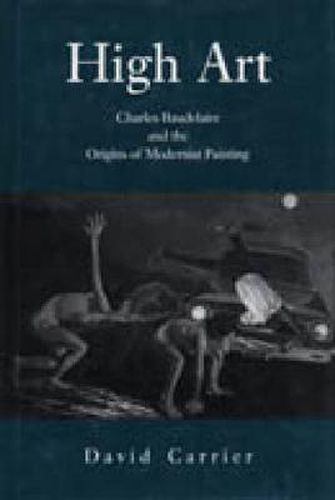Readings Newsletter
Become a Readings Member to make your shopping experience even easier.
Sign in or sign up for free!
You’re not far away from qualifying for FREE standard shipping within Australia
You’ve qualified for FREE standard shipping within Australia
The cart is loading…






The great poet Charles Baudelaire (1821-1867) was also an extremely influential art critic. High Art relates the philosophical issues posed by Baudelaire’s art writing to the theory and practice of modernist and postmodernist painting. Baudelaire wrote in an age of transition, David Carrier argues, an era divided by the Revolution of 1848, the historical break that played for him a role now taken within modernism by the political revolts of 1968. Moving from the grand tradition of Delacroix to the images of modern life made by Constantin Guys, this movement from high to low , from the unified world of correspondences to the fragmented images of contemporary city life, motivates Baudelaire’s equivalent to the post-1968 turn away from formalist art criticism. Viewed from the perspective of the 1990s, Carrier argues, the issues raised by Baudelaire’s criticism and creative writing provide a way of understanding the situation of art writing in our own time.
$9.00 standard shipping within Australia
FREE standard shipping within Australia for orders over $100.00
Express & International shipping calculated at checkout
The great poet Charles Baudelaire (1821-1867) was also an extremely influential art critic. High Art relates the philosophical issues posed by Baudelaire’s art writing to the theory and practice of modernist and postmodernist painting. Baudelaire wrote in an age of transition, David Carrier argues, an era divided by the Revolution of 1848, the historical break that played for him a role now taken within modernism by the political revolts of 1968. Moving from the grand tradition of Delacroix to the images of modern life made by Constantin Guys, this movement from high to low , from the unified world of correspondences to the fragmented images of contemporary city life, motivates Baudelaire’s equivalent to the post-1968 turn away from formalist art criticism. Viewed from the perspective of the 1990s, Carrier argues, the issues raised by Baudelaire’s criticism and creative writing provide a way of understanding the situation of art writing in our own time.